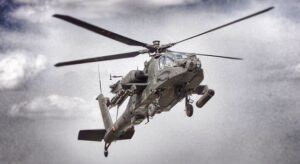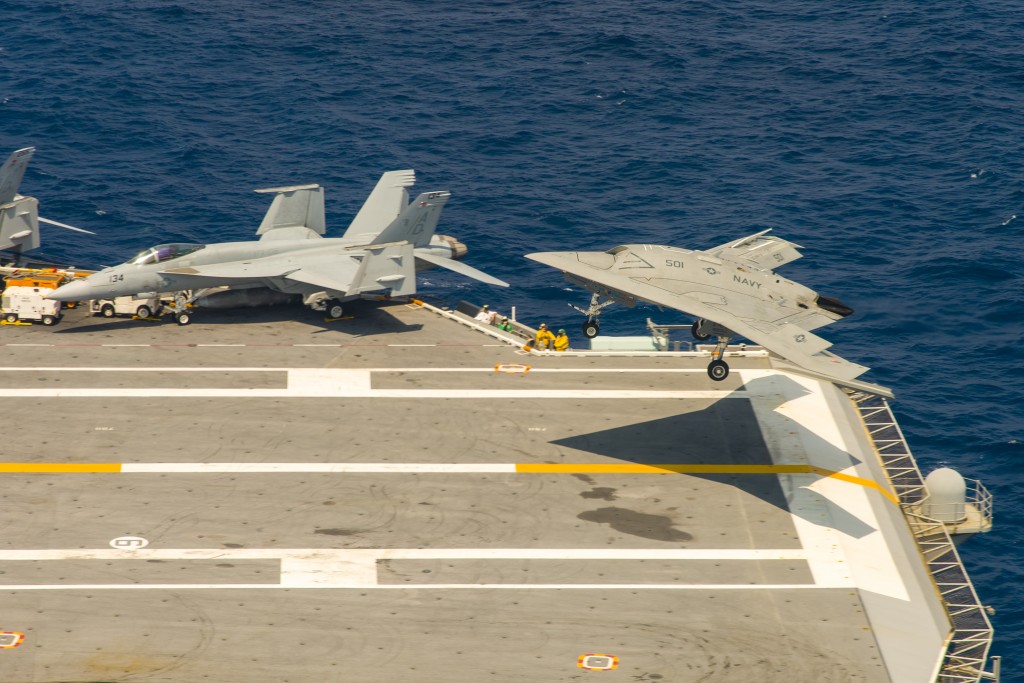If you’re following the Navy’s new drone program, hold on to something. Keeping track of the various names of what used to be UCLASS and then became CBARS and is now the MQ-XX Stingray — or perhaps the MQ-25 — may make you as dizzy as keeping up with what the Navy plans to do with it. The Navy is in a hurry.
Perhaps the most interesting wrinkle introduced so far is the idea of tying as many as three of the aircraft at a time to an F-35, an idea Rear Adm. Michael Manazir, director of air warfare for the chief of naval operations, offered at an Air Force Association event Tuesday.
“What I would hope to do is be able to use technology and innovation so that when that (unmanned) aircraft in the mid-‘20s comes off the flight deck doing an ISR and a tanking role, we can connect it through a waveform still to be determined to an F-35 or an E-2 or a Super Hornet and be able to give that (unmanned) aircraft commands,” Manazir said. “Third Offset is about man-machine teaming.”
The UCLASS — Unmanned Carrier-Launched Aerial Surveillance & Strike drone — was envisioned as a stealth bomber but became the CBARS (Carrier-Based Aerial Refueling System). The Stingray, besides carrying gas, could play an innovative role in Fusion Warfare — i.e., combining and sharing among friendly forces what sensors aboard aircraft, ships, submarines and satellites reveal about the enemy and the battlespace.
“The unmanned system coming off the carrier, in the instantiation that I think about, is three (drone) wingmen and an F-35,” Manazir said. “A single pilot. Combat spread now is 25 miles apart in Fifth Generation tactics. Imagine a single aviator owning a 100-mile front of air dominance or air superiority — because that pilot is talking to the extended unmanned systems.”
“We are very anxious to get unmanned platforms onto the aircraft carrier,” Manazir, said. While he said the Navy might one day arm the new MQ-XX Stingray – the drone’s latest temporary official name – he explained that just buying a drone that “will do tanking and ISR (Intelligence, Surveillance and Reconnaissance) is how we get unmanned onto the carrier rapidly and at the least cost.”
The Navy has requested $89 million in fiscal 2017 for research and development of the Stingray and $2.16 billion across the Future Years Defense Plan, with four or more companies — Boeing, General Atomics, Lockheed Martin, and Northrop Grumman – expected to offer bids. Navy leaders are to meet April 3 or 4 to settle on a Request for Proposals to be issued this summer.

Manazir said he wants the Navy to pursue what he called “man-machine teaming” so manned aircraft crews can control the sensors of the drones and maybe even the drones themselves.
The Army, which calls that Manned-Unmanned Teaming, has developed technology to allow AH-64E Apache attack helicopter crews to control the sensors of drones and plans to extend that control to the drone itself and, in the case of the MQ-1C Gray Eagle, the drone’s weapons as well. And there’s been very early work done on F-35 pilots controlling drones by the Air Force.

